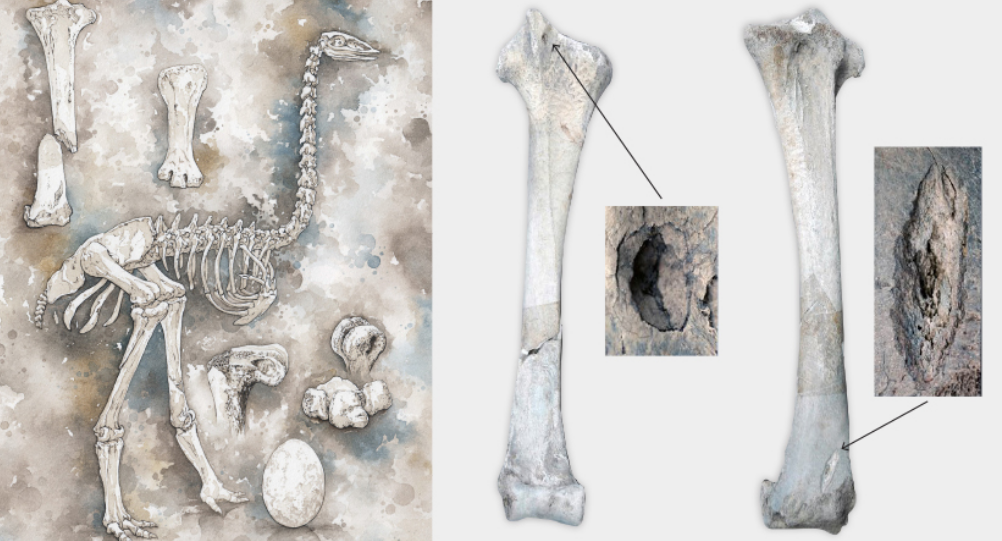
There is a virtual flock of new and interesting bird science news all of the sudden, including the rediscovery of an extinct Bahama Nuthatch. But here I want to note, and for now, dismiss, a find from Madagascar.
It was always thought that humans first inhabited the island of Madagascar about four or five thousand years ago or so. It was after that date that many of the great and strange animals of that island went extinct, presumably because of human hunting. One of those animals was the Giant Elephant Bird (including, but not limited to, Aepyornis maximus)
But now, there have been possible cut marks fond on extinct elephant bird bones dated to about 10,000 years ago. That would change our thinking on Madagascar, as well as human movement in the Indian Ocean, considerably.
I’ve examined photographs of the cut marks. They look almost exactly like a mark we found on an ancient extinct giant turtle bone several years ago, dated to about 2.3 million years ago, in a region where no previous evidence of ancient human ancestor was known.
Science did not let us solidify that claim. There are too many ways to get a cut mark or two. Actual cut marks made by actual stone tools are in fact never unequivocal. We can only assign probabilities. If the marks are numerous, located in logical locations, and found in a time-space context where stone tools are otherwise well documented, then fine. If they are the only evidence of humans, then not fine.
There are other bits and pieces of evidence for earlier occupation of Madagascar, but just as is the case for Australia and the Americas, the thing does not hang together yet. For now I think we have to stick with the old and extant model of later arrival of humans, followed quickly by a local extinction event.











Leave a Comment